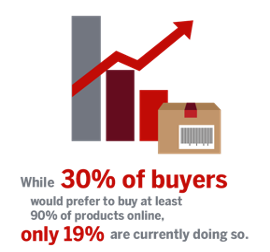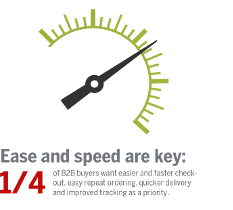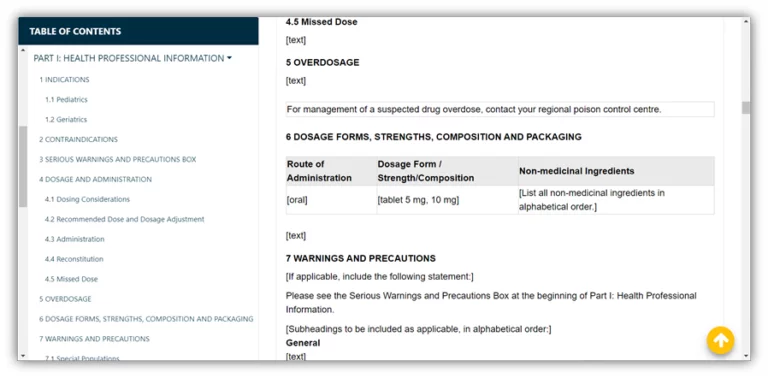Our latest research tells us that when it comes to B2B buyer behavior, e-commerce is buyers’ preferred avenue for completing purchases. But the purchasing process today has its hurdles — and these hiccups are forcing buyers to look offline for help.
New Data: An Overview of B2B Buyer Behavior in 2019
We recently commissioned a research report analyzing the B2B buyer behavior, preferences, and challenges of 560 global B2B organizations that are (or that purchase from) wholesalers, manufacturers or distributors.
Here are some insights from that report:
Today, despite a long-standing inclination toward phone orders and email orders (to avoid data entry errors and purchasing challenges), B2B buyers in 2019 are leaning toward e-commerce —even over historically preferred sales channels.
For 71% of buyers today, online is the most used channel for placing orders. But this doesn’t mean B2B e-commerce experiences are overwhelmingly stellar:
While 30% of buyers would prefer to buy 90% or all of their products online, only 19% are currently doing so. (If you’re wondering why, it’s because they can’t do so easily).

One-quarter of B2B buyers want easier and faster checkout, easier repeat ordering, quicker delivery, and better tracking online than is available to them now.

What this tells us is that B2B buyers are likely turning to online channels for a baseline level of convenience, rather than turning to e-commerce because the experiences themselves are up to par with their expectations. This also means they’re often looking offline for answers.
Online vs. Offline: How Purchase Journey Roadblocks Impact Buyers’ Channel Choices
Ultimately, the core of B2B buyers’ challenges is centered on the buyer journey — and more specifically, the friction and hurdles caused by poor experiences throughout the journey. For the purposes of this blog, we will refer to the following four stages of the buyer journey:
- Problem identification
- Information search
- Evaluation of alternatives
- Purchase decision
In our latest research, found that based solely on a lack of information available online, buyers are forced to pursue offline help from a sales representative at every single stage of the journey.
Here’s what the data says about B2B buyer behavior along the path-to-purchase:

It should be easy to see that if you add up those percentages, you’re looking at a whopping 98% of respondents who reported encountering this challenge at some point during the path toward an online purchase.
Later, once buyers are completing a purchase (or at least trying to), the challenges continue. As many as 58% of B2B buyers surveyed indicated that they encounter order errors online monthly, bi-monthly, weekly, and even daily:

In turn, we’re seeing omnichannel B2B buyer behavior happening as a result of insufficient experiences both online and offline — rather than as a choice based on preference. B2B organizations should strive to improve experiences across all channels, so that buyers are free to engage and purchase via their avenue of choice, and not just be boxed into the least frustrating option.
Fortunately, there’s a solution to these cross-channel customer experience challenges (and others). And it starts with your ERP.
ERP-Integrated E-Commerce: Addressing B2B Buyer’s Top Hurdles
When talking about ERP systems, B2B businesses often overlook the potential of ERP e-commerce. If your business is among them, we’ve got news for you:
Your ERP system is not just a hub for your business logic and data; it can also solve some of the B2B buyer challenges we’ve already outlined, drive a more customer-centric e-commerce experience, and help meet B2B organizations’ key performance indicators (KPIs) and goals:
- Cost Savings:
E-commerce, even in its most basic and rudimentary form, addresses the cost-savings issue simply by eliminating the time and resources needed to take and manually enter offline sales orders. With ERP-integrated e-commerce, cost savings can be realized even further thanks to further minimized time and effort required to manage and synchronize web store data.
- Efficiency of the Purchase Process:
If the major challenges during the B2B purchase process revolve around data availability and order errors, then ERP integration is a clear answer. By leveraging your Dynamics or SAP ERP with Sana, you can pull real-time ERP data (like inventory information and product data) into your web store to keep your customers fully informed 24/7. This rich product data can also significantly minimize order errors, such as those caused by incorrect product, inventory, or account data entry.
- Client Satisfaction:
There will always be a margin for error when it comes to online purchasing, and it’s likely you’ll not be able to provide all the information online that every single customer may need online. This is why — in addition to mitigating current e-commerce challenges as best as you can — it’s also important to focus on an effective omnichannel strategy. By doing so, you can not only minimize the extent to which customers are forced offline due to online challenges, but also provide a smooth and seamless experience for those customers who do switch between online and offline channels by choice.
More Insights: B2B Buyer Behavior, Challenges and Trends
Want to learn (even more) about how you can meet B2B buyers’ unmet demands? Download our newest research report for the latest B2B buyer behavior data and insights.


